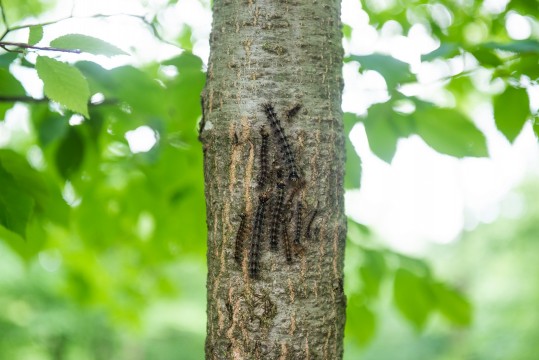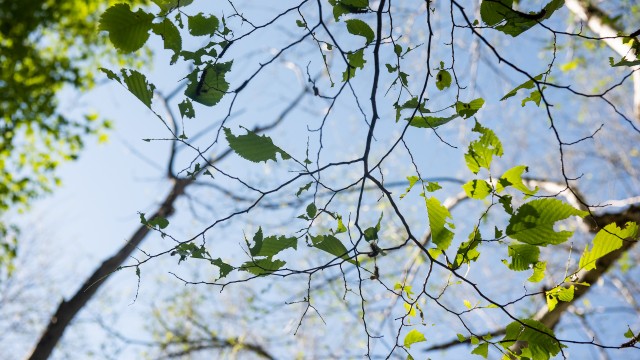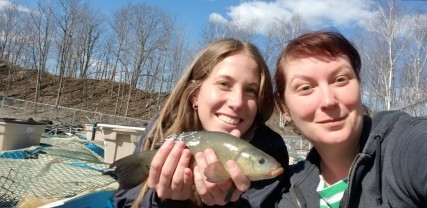Gypsy moths (Lymantria dispar) have been making headlines in Quebec since mid-June. The very hungry caterpillars have taken over the region’s forests and are devouring the foliage of many plant species. The invasive insect has been found in North America since the late 1800s, when it was imported to support the local silk industry. Like many species imported from overseas, some of the critters escaped and established the populations we find here today.
Although many of us first took notice of this voracious insect this summer, it’s certainly not the first time the region has experienced a gypsy moth infestation. In fact, a sharp increase in the gypsy moth population brought Dr. Martin Lechowicz, a plant ecology researcher and professor at McGill University, to Mont-Saint-Hilaire in the late 1970s, marking the beginning of a long and fruitful relationship with the Gault Nature Reserve. Dr. Lechowicz and his colleagues published several papers on the subject at the time, and have since published a number of more recent studies. Dr. Lechowicz went on to serve as the Reserve director for 16 years.
Thanks to the work of researchers like Dr. Lechowicz, we now know that the gypsy moth “plague” is a cyclical phenomenon and that an infestation of the magnitude we are seeing this year occurs roughly every decade. Since the gypsy moth is an invasive species that arrived on this continent fairly recently, it doesn't have many local predators. So, when the conditions are right, the gypsy moth population booms, leaving a desolate landscape in its wake. In this case, the past two mild winters and this year's warm, dry spring appear to be to blame.
Fortunately, we can look to the cyclical nature of this infestation for hope. The caterpillars that have seemed omnipresent in our forests over the past few weeks will soon turn into moths. Their feeding frenzy will subside, and the forest will be able to catch its breath. Unfortunately, some trees that are already in poor condition are at risk of dying as a result of defoliation.
Other trees will grow more slowly due to the lack of photosynthesis resulting from early season defoliation. Fortunately, most healthy trees will regain their canopy before fall, making way for a more verdant landscape than what we currently see. Nature can be surprisingly resilient!
By Frédérique Truchon
Header : The gypsy moth catterpilar (Lymantra dispar) (photo: Alex Tran)
Invasive Species: A Study of Tench and Their Invasion Potential
August 4, 2022. To understand the potential impact that Tench might have on the Great Lakes Basin, McGill Ph.D. student Sunci Avlijaš conducted a study in 2018 examining the effects that temperature and type of lake environment have on Tench growth.



